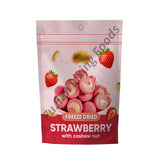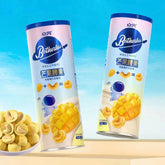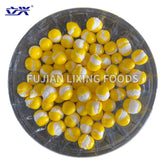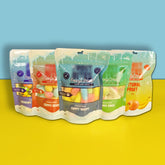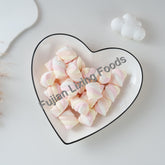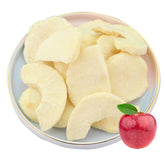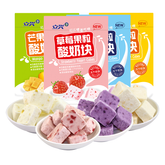The Charm of Freeze-Dried Fruits: Your Guide to Healthy Snacking
The Charm of Freeze-Dried Fruits: Your Guide to Healthy Snacking
Introduction In recent years, freeze-dried fruits have gained immense popularity as a healthy and convenient snack option. This article aims to provide a comprehensive guide on the benefits, production process, and various uses of freeze-dried fruits, making it an essential read for anyone interested in incorporating these nutritious snacks into their diet.
What Are Freeze-Dried Fruits? Freeze-dried fruits are fruits that have been processed using a technique called freeze-drying. This method involves freezing the fruits and then reducing the surrounding pressure to allow the ice to sublimate directly from a solid to a gas. The result is a lightweight, crispy, and nutrient-rich snack that retains most of the original flavor and nutritional value of the fresh fruit.
Benefits of Freeze-Dried Fruits
- Nutrient Retention: Freeze-drying can preserve most of the vitamins, minerals, and antioxidants found in fresh fruits. This makes freeze-dried fruits an excellent source of essential nutrients.
- Long Shelf Life: Due to the removal of moisture, freeze-dried fruits can last for several months or even years without spoiling. This makes them ideal for long-term storage and emergency preparedness.
- Convenience: Freeze-dried fruits are easy to carry and consume, making them perfect for snacks on the go, travel, and outdoor activities.
- Versatility: They can be rehydrated by adding water or used as-is in recipes such as smoothies, cereals, and baked goods.
- Low Calorie: Because of the removal of moisture, freeze-dried fruits have fewer calories compared to fresh fruits.
- No Preservatives: Unlike many other processed snacks, freeze-dried fruits do not require preservatives or additives to maintain their quality.
The Production Process of Freeze-Dried Fruits The production process of freeze-dried fruits involves several steps:
- Pre-treatment: The fruits are washed, peeled, and cut into uniform pieces to ensure consistent drying.
- Freezing: The prepared fruits are placed in a freeze-drying chamber and frozen at extremely low temperatures, typically around -50°C (-58°F).
- Vacuum Drying: The frozen fruits are then placed in a vacuum environment, where the pressure is reduced, allowing the ice to sublimate directly into vapor without passing through the liquid phase.
- Drying: The sublimation process continues until all the ice is removed, leaving behind dry, crispy fruits.
- Packaging: The dried fruits are packaged in sealed containers to prevent moisture reabsorption and maintain freshness.
Types of Freeze-Dried Fruits There are many different types of freeze-dried fruits available, each with its unique flavor and nutritional profile. Some popular varieties include:
- Strawberries: Sweet and slightly tart, strawberries are rich in vitamin C and antioxidants.
- Blueberries: Known for their high antioxidant content, blueberries are also a good source of fiber and vitamin K.
- Bananas: Freeze-dried bananas are a good source of potassium and dietary fiber.
- Apples: These fruits are high in fiber and contain various vitamins and minerals.
- Mangoes: Mangoes are rich in vitamins A and C, making them a delicious and nutritious snack.
- Pineapples: Pineapples are known for their sweet and tangy flavor and are a good source of vitamin C and bromelain.
- Berries: Berries are low in calories and high in fiber, making them an ideal choice for weight management.
Uses of Freeze-Dried Fruits Freeze-dried fruits can be enjoyed as standalone snacks or used as ingredients in recipes. Here are some creative uses:
- Snacks: Enjoy freeze-dried fruits as quick and healthy snacks between meals.
- Smoothies: Add freeze-dried fruits to smoothies to enhance flavor and nutrition.
- Cereals: Sprinkle freeze-dried fruits on breakfast cereals or yogurt to add flavor and color.
- Baked Goods: Use freeze-dried fruits in muffins, cookies, and other baked goods to add texture and flavor.
- Trail Mix: Combine freeze-dried fruits with nuts and seeds to create nutritious trail mix for hiking or camping.
- Decorations: Use freeze-dried fruits as decorations on cakes, cupcakes, and other desserts.
- Gifts: Package freeze-dried fruits in decorative jars or bags to make thoughtful and healthy gifts.
Conclusion Freeze-dried fruits offer a wide range of benefits, from nutrient retention and long shelf life to convenience and versatility. Whether you're looking for a healthy snack option, a way to prepare for emergencies, or a creative ingredient for your recipes, freeze-dried fruits are a fantastic choice. Incorporate them into your diet today and enjoy the magic of this modern food innovation.

